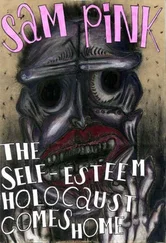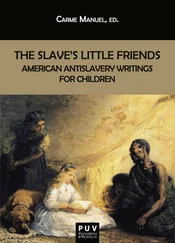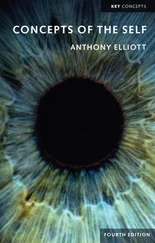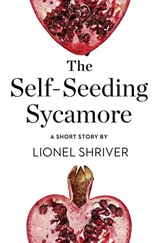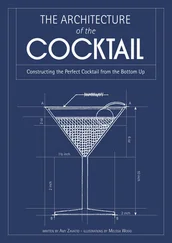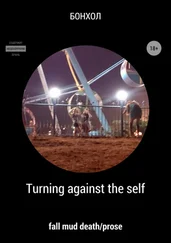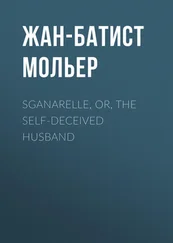AAVV - Constructing the Self
Здесь есть возможность читать онлайн «AAVV - Constructing the Self» — ознакомительный отрывок электронной книги совершенно бесплатно, а после прочтения отрывка купить полную версию. В некоторых случаях можно слушать аудио, скачать через торрент в формате fb2 и присутствует краткое содержание. Жанр: unrecognised, на английском языке. Описание произведения, (предисловие) а так же отзывы посетителей доступны на портале библиотеки ЛибКат.
- Название:Constructing the Self
- Автор:
- Жанр:
- Год:неизвестен
- ISBN:нет данных
- Рейтинг книги:3 / 5. Голосов: 1
-
Избранное:Добавить в избранное
- Отзывы:
-
Ваша оценка:
- 60
- 1
- 2
- 3
- 4
- 5
Constructing the Self: краткое содержание, описание и аннотация
Предлагаем к чтению аннотацию, описание, краткое содержание или предисловие (зависит от того, что написал сам автор книги «Constructing the Self»). Если вы не нашли необходимую информацию о книге — напишите в комментариях, мы постараемся отыскать её.
Constructing the Self — читать онлайн ознакомительный отрывок
Ниже представлен текст книги, разбитый по страницам. Система сохранения места последней прочитанной страницы, позволяет с удобством читать онлайн бесплатно книгу «Constructing the Self», без необходимости каждый раз заново искать на чём Вы остановились. Поставьте закладку, и сможете в любой момент перейти на страницу, на которой закончили чтение.
Интервал:
Закладка:
The notion of autobiography as a form of self-writing and self-creation, rather than as a simple reproduction of a life, has had tremendous implications for the genre. In the Introduction to his 1980 volume, James Olney asked a few simple questions on this aspect: “What do we mean by the self, or himself ( autos )? What do we mean by life ( bios )? What significance do we impute to the act of writing ( graphe )—what is the significance and the effect of transforming life, or a life, into a text?” ( Autobiography 6). As Peggy Whitman Prenshaw remarks in her contribution to this volume, “autobiography is not a life. It is a text, a product of memory and imagination, the effort of one storyteller to fashion a coherent plot from the episodic events that make up a life.” In other words, it is a literary work of nonfiction, not a historical account of facts in a person’s life. The confluence and influence of feminist theory and postcolonial theory during the 1980s, with its emphasis on ethnic and minority literatures, enriched critical approaches to the genre and provided new impetus to the literary analysis of autobiographical works. Since then, an impressive number of studies on autobiography have explored how a life is transformed into a text which is mediated by issues of identity, gender, race, class, performance and the body.
The preeminence of the self and the boundaries between fact and fiction have been constant in studies on autobiography. James Olney discusses the issue in Metaphors of Self: The Meaning of Autobiography (1972) by presenting autobiography as one more example of the self, saying that “the self expresses itself by the metaphors it creates and projects, and we know it by those metaphors” (188). Other important autobiography theorists like Paul John Eakin have emphasized the fictive element present in autobiography and the absence of an absolute truth. Autobiography, for Eakin, is an act of self-creation and self-invention at the moment of writing. In Fictions in Autobiography: Studies in the Art of Self-Invention (1985), he claims that “autobiographical truth is not fixed but an evolving content in an intricate process of self-discovery and self-creation, and further, that the self that is at the center of all autobiographical narrative is necessarily a fictive structure” (3). Similarly, and in the context of self and development, Mark Freeman argues in Rewriting the Self: History, Memory, and Narrative (1993) that “the process of narrating the past has a markedly fictive dimension” (9), which points to the autobiographer’s inevitable distortion or interpretation of the past. In his analysis of the relationship between the self and the text, Timothy Dow Adams focuses on the fact that autobiographers are unreliable narrators and, as such, they may compose a self based on the image they want to project for the reader. In Telling Lies in Modern American Autobiography (1990), Adams argues that autobiography is paradoxical because it
possesses a peculiar kind of truth through narrative composed of the author’s metaphors of self that attempt to reconcile the individual events of a lifetime by using a combination of memory and imagination . . . all . . . rooted in what really happened, and judged both by the standards of truth and falsity and by the standards of success as an artistic creation. (3)
Among the different authors he analyses, he devotes entire chapters to discussing southerners like Lillian Hellman and Richard Wright as examples of authors who were accused of lying in their memoirs. The creative dimension of memory and its fictive component in self-constructions are the main focus of James Olney’s Memory and Narrative: The Weave of Life-Writing (1998). He also includes Richard Wright in Chapter Three.
Studies on autobiography including gender issues appeared in the 1980s. Mary G. Mason’s essay “The Other Voice: Autobiographies of Women Writers” in James Olney’s Autobiography: Essays Theoretical and Critical (1980) is the only one in the entire volume that discusses women’s contribution to the autobiographical genre. Her work, however, paved the way for lengthier studies in subsequent years. Early attempts to establish a distinct female tradition of autobiography can be seen, for example, in Estelle Jelinek’s The Tradition of Women’s Autobiography (1986), in which she undertakes a historical overview of women’s autobiography in England and America and includes Lillian Hellman as part of that female tradition she views as “different” (13) from the male one. Bella Brodzki and Celeste Schenk’s volume Lifelines: Theorizing Women’s Autobiography ( 1988) constitutes also an attempt to introduce women’s autobiographical texts into the canon, whereas Sidonie Smith’s A Poetics of Women’s Autobiography: Marginality and the Fictions of Self-Representation (1987) places emphasis on the presence of fiction in women’s autobiographies. Carolyn Heilbrun also defines her popular volume Writing a Woman’s Life (1988) as a “feminist undertaking” (18) that deliberately seeks to be non-theoretical to reach wider audiences.
In The Private Self: Theory and Practice of Women’s Autobiographical Writings (1988), Shari Benstock views autobiography as a genre that mediates “between ‘self’ and ‘life’” and also as “a meeting of ‘writing’ and ‘selfhood’” (11). Her collection of essays includes a seminal article by Susan Standford Friedman entitled “Women’s Autobiographical Selves: Theory and Practice” that questions Gusdorf’s individualistic paradigm of the autobiographical self because it cannot be applied to women and minorities, as it “ignore[s] the role of collective identity and relational identities in the individuation process of women and minorities” (35). Her notion of autobiographical selves applies Nancy Chodorow’s and Sheila Rowbotham’s theories of women’s relational identity to women’s autobiographical texts. Elizabeth Fox-Genovese’s essay in the same collection, “My Statue, My Self: Autobiographical Writings of Afro-American Women,” focuses on the markers of race and gender as an element of difference in women’s autobiography to examine the distinctiveness of the African American female literary tradition and the autobiographies it has produced, claiming Zora Neale Hurston as part of that tradition. Another important contribution to feminist readings, which incorporates postcolonial theory to question the universal validity of male self-presentation in autobiography, is Françoise Lionnet’s Autobiographical Voices: Race, Gender, Self-Portraiture (1989). Lionnet uses the “subversive . . . idea of métissage ” or hybridization to challenge the discourses of (patriarchal and colonial) power (12). Including Zora Neale Hurston and Maya Angelou in her discussion of African-American, Caribbean, and Mauritian women’s autobiographies, the Mauritian-born author focuses on the sociocultural constructions of race and gender to contest discourses of power.
In Autobiographics: A Feminist Theory of Women’s Self-Representation (1994), Leigh Gilmore offers the term “autobiographics” as an alternative to the traditional model of autobiography and the “philosophical definition of the self derived from Augustine” (153), which reproduces a universal selfhood and therefore is not apt to represent women’s life stories. Gilmore believes that autobiographics allow women to transgress the boundaries of the genre and to move from the position of object to subject with “self-representational agency” (12). Sidonie Smith and Julia Watson are also outstanding scholars in the study of autobiography. Their co-edited volume Women, Autobiography, Theory: A Reader (1998) includes most of the relevant critical and theoretical contributions to women’s autobiography by leading scholars in the field over more than twenty years. In their lengthy introduction, they provide a theoretical overview of the development of the genre, and it is a must-read volume for anyone interested in autobiography. In Interfaces: Women, Autobiography, Image, Performance (2003), they have moved from their exploration of autobiographical acts in textual modes to the “self-representational acts” in visual modes (7), with an emphasis on performance art and the different forms of self-portraiture. In Before They Could Vote: Autobiographical Writings, 1819-1919 (2006), they offer a selection of twenty-four autobiographical narratives written by American women, focusing on what they call the “forgotten century” (19), a period of suffragist reform that took place in domestic spaces. They avoid the black and white binary and instead present a multicultural and multiethnic selection of autobiographical narratives by unknown women.
Читать дальшеИнтервал:
Закладка:
Похожие книги на «Constructing the Self»
Представляем Вашему вниманию похожие книги на «Constructing the Self» списком для выбора. Мы отобрали схожую по названию и смыслу литературу в надежде предоставить читателям больше вариантов отыскать новые, интересные, ещё непрочитанные произведения.
Обсуждение, отзывы о книге «Constructing the Self» и просто собственные мнения читателей. Оставьте ваши комментарии, напишите, что Вы думаете о произведении, его смысле или главных героях. Укажите что конкретно понравилось, а что нет, и почему Вы так считаете.

